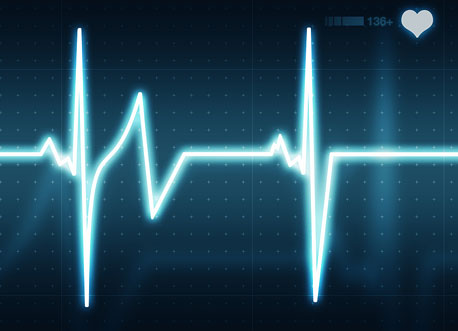
Conditions covered include chronic heart failure (heart’s pumping action is compromised), ischemic heart disease (reduced blood flow to the heart muscle), recurrent arrhythmias (heart/rate/rhythm disorder, too fast, slow, irregular), symptomatic congenital heart disease (structural defects leading to malfunction, aneurysm of aorta or major heart branches (swelling due to wall weakness), chronic venous insufficiency (leg veins cannot pump enough oxygen poor blood back to the heart), peripheral arterial disease (obstruction of large peripheral arteries) heart transplant.
Heart problems
- Have you had a heart attack?
- Have you had a coronary artery bypass?
- Are you on beta-blocker therapy?
- Have you had an ECG/EKG?
- Have you had treadmill testing?
- If you have chest pain is it with/without exertion?
- Do you have shortness of breath with/without exertion?
- Have you been treated by a cardiologist? If so, do you know your classification on the NYHA scale, I, II, III, IV?
- How many pillows do you sleep on at night?
- Do your ankles swell?
- Do you need to elevate your legs?
Our heart is a big pumping muscle, in the middle of our chest, constantly sending blood circulating throughout the body to enrich us with oxygen or to acquire oxygen from the lung. This back and forth; push and pull; filling and depleting has a natural rhythm that we can detect at any time.
Blood flow which is slowed or obstructed can cause cardiac deficiencies (bad news) but can also be treated (good news) with medications, angioplasty (placing stents/balloons in the veins to clear blockage) and/or bypass surgery (rerouting the blood flow by grafting healthy veins acquired from the leg).
What if there has been a heart attack (myocardial infarction, i.e. MI)? An MI results in heart tissue death (which is permanent) because of inadequate oxygen supply. But like a stroke, the damage can be minimal (some people don’t even know they have had one) or very significant causing lasting damage. After a heart attack, it is not unusual for the individual to develop an anxiety disorder. The symptoms of a panic attack are strikingly similar (shortness of breath, chest pain, sweating, dizziness). Unfortunately, cardiologists often ignore “non-cardiac” symptoms and fail to refer their patient for appropriate treatment. But if you have panic attacks, treatment from a psychologist or psychiatrist can help establish disability for that condition if it does not improve despite treatment.
Sometimes the heart is also defective and cannot maintain a normal or consistent rhythm. A pacemaker (electronic devices that “jump start” the heart) is usually curative but not always. When arrhythmias persist and occur 3 times a year despite treatment, Social Security will find the condition disabling.
Sometimes the heart is weak and/or not otherwise amenable to long lasting treatment. Social Security will evaluate the effectiveness of treatment when considering whether the heart is too damaged and results in disability. In 2008 Social Security added a new criteria finding disability for individuals who have had 3 revascularizations (angioplasty or bypass) in a year.
The heart relies on veins to carry the oxygen rich and oxygen poor blood back and forth. The hardest working veins are those which have to take the oxygen poor blood from our legs/feet back up to the heart (working against gravity). Conditions like chronic venous insufficiency or peripheral arterial disease can result and are considered by Social Security as cardiac disorders. These conditions can be found disabling when swelling is extensive causing skin breakdown or cramp-like leg pains (often mistaken for peripheral neuropathy caused by diabetes). A doppler study can effectively measure the severity of these symptoms (called claudication).
Previous post: Disabling Condition: Special Senses & Speech










